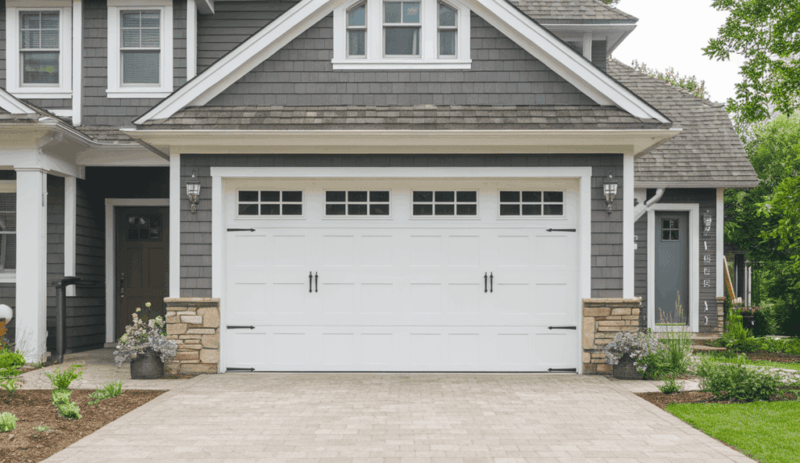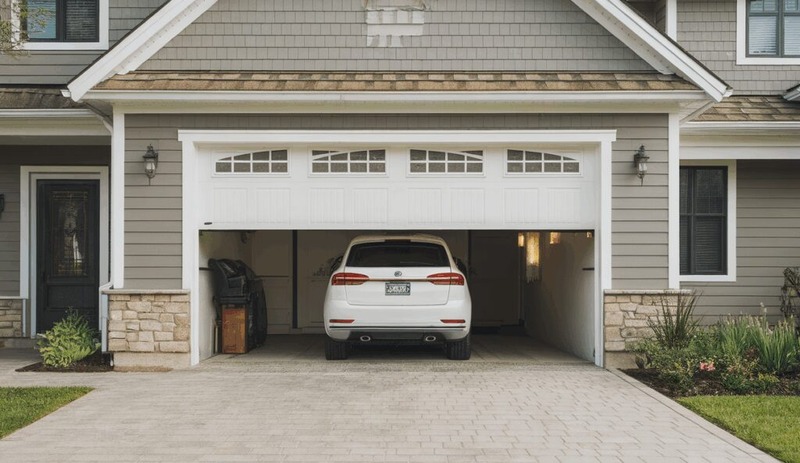
You’re rushing to work, and suddenly your garage door decides to stop midway. The remote clicks, but nothing happens. Frustration sets in as you wonder what’s wrong.
Garage door issues are more common than you might think. We’ll break down why this happens and help you understand whether it’s a quick fix or time to call a professional.
Why Your Garage Door Stops Halfway
When a garage door quits moving halfway through its lift or drop, it is rarely just random. Something in the system is probably out of place. The usual culprits are tracks that aren’t straight, rollers that are worn, springs that have lost tension, and safety sensors that miss their mark.
Each part works with the others, so if one is off, the whole thing can freeze. Our expert technicians in Dallas, TX have seen countless cases where a single component causes a complete system breakdown.
Track Alignment – The Quiet Problem
Tracks are like rails for the door; they must stay straight and tight. Even a tiny bend from a child’s foot or a bump can create resistance. Over months the steel can warp a little, changing the perfect geometry.
Most owners don’t see it until the door stalls. A simple visual check and a level can spot a curve before it leads to a stop. In Dallas, TX, where temperature changes can affect metal, this is especially important.
Rollers and Track Wear
Rollers are the tiny wheels that let the door glide. They face constant friction and their bearings wear down. When they start to squeak – think of an old hamster wheel – they also add extra drag.
Bad rollers push more load onto the tracks, which speeds up track wear. Taking the time to oil the rollers and swap out the dead ones keeps the door moving smooth.
Also Check Out: What Causes Garage Door To Open By Itself Randomly?
Spring Tension – The Hidden Danger
The big coils, either torsion or extension springs, give most of the lifting power. They are wound tight on purpose. If a spring loses strength – from metal fatigue, rust, or a hit – the door may begin to move and then stop short.
A weak spring not only slows the door but can snap and fling its stored energy. That’s why “garage door springs are under extreme tension and can be dangerous” is more than a warning; it’s a reason to let only trained technicians touch them.
Sensors and Safety Gadgets
Modern openers have infrared beams that stop the door if something blocks the path. Dust, spider webs, or a mis-aimed sensor can trick the system into thinking something is in the way, causing a mid-cycle halt.
Wipe the lenses clean, line them up straight, and test the beam. If it still cuts out, the fault may be deeper in the wiring or controller – a job for a pro.
When to Call in a Professional
Some signs mean “don’t try DIY”:
- The door keeps stopping even after you’ve checked tracks and sensors
- You see obvious dents or bends in the metal tracks
- Loud grinding or loud squeaks that aren’t gone after lubrication
- Any cracked or sagging springs
- Sensors still act up after a good clean
Trying to fix these yourself can be risky because you’re dealing with heavy parts and high tension. A certified technician will follow safety rules and make sure the whole system works right.
In Conclusion
The door stops midway mostly because of mis-aligned tracks, worn rollers, weak springs, or sensor problems. All of these things throw off the careful balance the door needs to move.
Spotting the early warnings, staying aware of spring danger, and calling a qualified repair person when needed will keep your garage door reliable, safe, and long-lasting. Regular upkeep is the simplest way to avoid the frustration of a door that quits halfway through a lift.
Garage door problems are frustrating, but most have straightforward solutions. Always prioritize safety and don’t hesitate to seek professional help when needed.
Quick Safety Note: Never attempt complex repairs like spring replacement on your own. These components are under high tension and can cause serious injury if mishandled.




